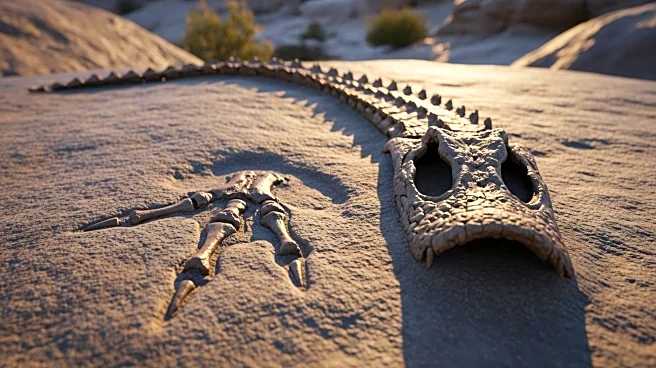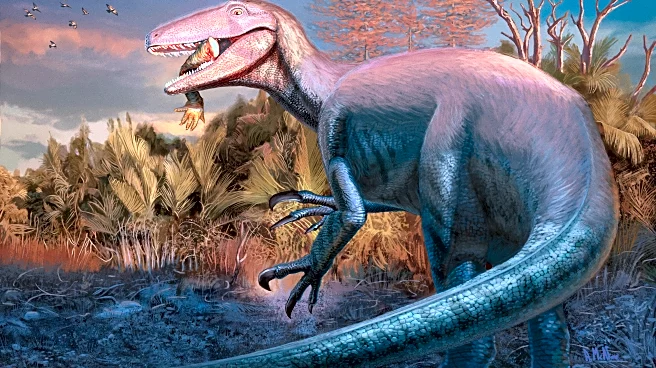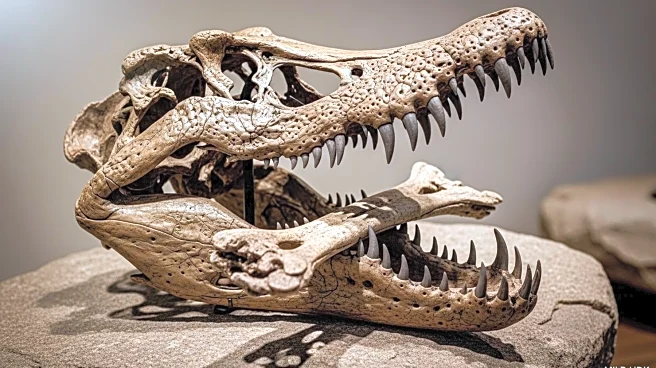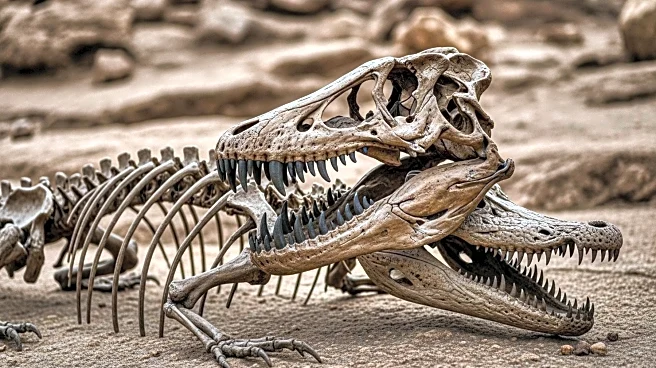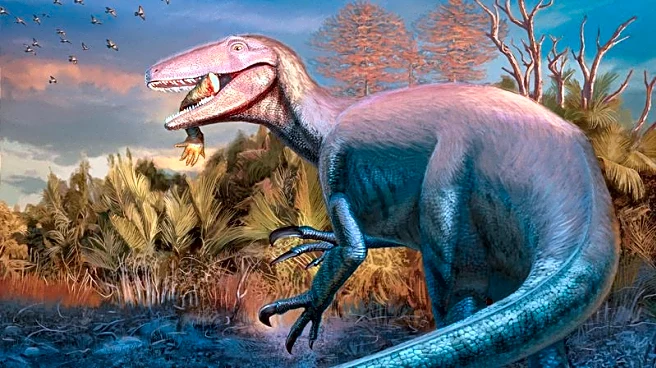What is the story about?
What's Happening?
Scientists have discovered a new dinosaur species in Argentina, named Joaquinraptor casali, characterized by its powerful claws and a crocodile bone found in its mouth. This megaraptoran dinosaur, estimated to be 23 feet long, lived in prehistoric Patagonia and is part of a group known for their stretched-out skulls and large claws. The discovery includes parts of the skull, arm, leg, and tail bones, making it one of the most complete megaraptoran skeletons found. The dinosaur likely lived between 66 and 70 million years ago, close to the time of dinosaur extinction, and was at least 19 years old when it died.
Why It's Important?
The discovery of Joaquinraptor casali provides significant insights into the evolutionary history and ecological role of megaraptorans, a group of dinosaurs that filled the apex predator niche in regions without tyrannosaurs. The presence of a crocodile bone in its mouth offers clues about its diet and predatory behavior, contributing to the understanding of ancient food chains. This find enhances the scientific knowledge of dinosaur biodiversity and adaptation strategies during the late Cretaceous period, offering a more complete picture of prehistoric ecosystems.
What's Next?
Researchers will continue to analyze the Joaquinraptor casali fossil to uncover more details about its hunting strategies and ecological interactions. The discovery may lead to further paleontological expeditions in Patagonia to find additional specimens and expand the understanding of megaraptoran evolution. The findings could influence future studies on dinosaur extinction events and the evolutionary pathways of predatory dinosaurs.
Beyond the Headlines
The naming of the dinosaur in memory of the researcher's son adds a personal touch to the scientific discovery, highlighting the human aspect of scientific exploration. The discovery underscores the importance of paleontological research in understanding ancient ecosystems and evolutionary biology, raising questions about the ecological niches occupied by megaraptorans and their interactions with other species.
AI Generated Content
Do you find this article useful?
